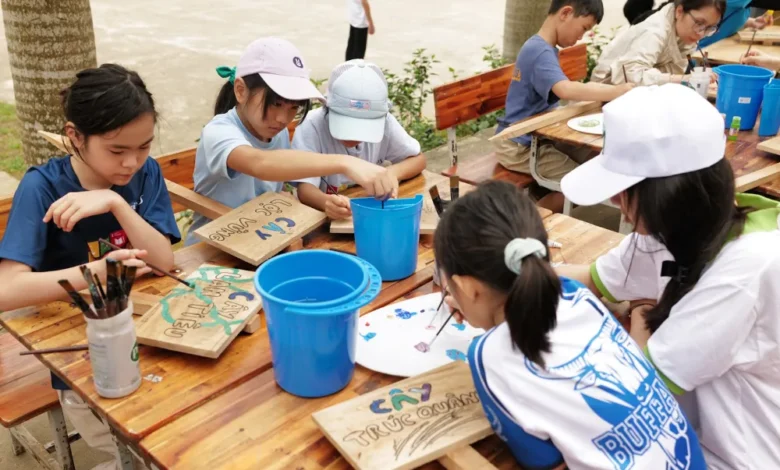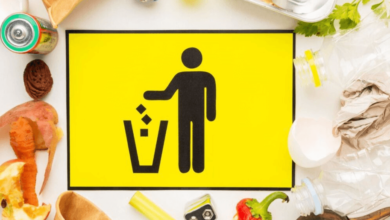The Science of Sustainability: Fun Ways to Teach Kids About Eco-Friendly Materials

Introduction
Children are naturally curious, creative, and eager to explore the world around them. This makes early education the perfect time to introduce concepts of sustainability—not through lectures or heavy statistics, but through play and interactive learning.
As climate change, pollution, and waste management become defining challenges of the 21st century, schools, parents, and communities are realizing the importance of teaching kids how to live more sustainably. Games, puzzles, experiments, and interactive learning activities offer an engaging way to embed eco-friendly habits that will last a lifetime.
From recycling races to STEM-based activities exploring polymers and biodegradable materials, there are countless fun ways to help children understand how their choices affect the planet. One fascinating example is experimenting with polyvinyl alcohol (PVA), a water-soluble and biodegradable polymer developed by companies like Kuraray Poval which can safely demonstrate how innovative materials are reshaping the future.
This article explores creative, science-backed, and kid-friendly ways to make sustainability a central part of education through games and playful learning.
1. Why Teach Sustainability Through Games?
Engagement and Retention
Children learn best when they’re engaged. Games transform sustainability into an interactive adventure instead of a classroom chore.
Creativity and Critical Thinking
Play-based sustainability activities allow kids to problem-solve, experiment, and innovate—skills that will be vital in addressing real-world environmental issues.
Accessibility
Games can be adapted for all age groups and settings, from classrooms to family homes.
When children learn sustainability concepts through hands-on activities, the lessons stick.
See also: Understanding Life Insurance Singapore
2. The Role of Materials in Daily Life
Kids are surrounded by materials—plastic toys, wooden desks, paper books, cotton clothes—but few stop to think about where they come from or where they end up.
Introducing eco-friendly materials is a great way to make sustainability relatable:
- Paper: Trees vs. recycled paper.
- Plastics: Conventional vs. biodegradable.
- Textiles: Cotton vs. synthetic fabrics.
- Polymers: Everyday items like glue, coatings, and packaging.
Teaching kids the basics of material science helps them see the impact of everyday choices.
3. Eco-Friendly Classroom Games & Activities
Recycling Relay
Kids race to sort items into bins labeled “recyclable,” “compost,” and “trash.”
- Teaches waste segregation.
- Makes recycling second nature.
Build-a-Green City
Students work in teams to build models of eco-friendly cities using recycled cardboard, biodegradable plastics, and natural materials.
- Encourages collaboration and urban sustainability awareness.
Biodegradable vs. Non-Biodegradable Challenge
Kids bury two sets of materials—one biodegradable, one not—and observe changes over time.
- Teaches patience and observation.
- Visual proof of how long harmful materials last.
4. STEM-Based Sustainability Games
Math Challenges
Students calculate carbon footprints of daily activities, turning math lessons into environmental science exercises.
Science Experiments
- Compare how fast biodegradable plastics decompose versus traditional plastics.
- Observe how sunlight or water affects different materials.
Eco-Engineers Role-Play
Students pretend to be engineers tasked with designing a school that produces zero waste.
- Fosters critical thinking.
- Links STEM with real-world solutions.
5. Digital Sustainability Games
Technology brings sustainability lessons to life in new ways:
- Mobile Apps: Recycling and energy-saving games for younger children.
- Virtual Reality (VR): Immersive experiences where students explore melting ice caps or design their own eco-friendly cities.
- Online Multiplayer Challenges: Kids around the world collaborate in eco-missions.
Gamification keeps children motivated while deepening their understanding of global issues.
6. Polymers & Eco-Science for Kids
Polymers are an exciting way to teach children about materials science and sustainability.
Safe Classroom Experiments with PVA
Polyvinyl alcohol (PVA) is water-soluble and biodegradable, making it safe for classroom demonstrations:
- Water-Soluble Film Demo: Show kids how PVA-based films dissolve in water, explaining how they replace harmful plastics.
- DIY Adhesive Project: Use PVA-based glue in art projects, demonstrating its eco-friendly properties.
- Eco-Science Discussion: Explain how PVA is used in packaging, coatings, and textiles to reduce environmental harm.
By exploring polymers, kids gain a hands-on understanding of how science drives sustainable innovation.
7. Parental & Teacher Involvement
Parents and teachers are crucial in reinforcing sustainability lessons:
- Family Recycling Logs: Families track weekly recycling progress.
- Eco-Friendly Homework Projects: Teachers assign green experiments like building compost bins.
- Modeling Behavior: Adults must practice what they preach—reusable bottles, composting, and energy-saving habits.
Children mirror adult behavior, making mentorship vital.
8. Community Engagement Through Play
Sustainability education extends beyond classrooms and homes into communities:
- Eco Fairs: Schools host fairs where kids present green projects.
- Recycling Competitions: Neighborhood contests for waste reduction.
- Green Clubs: Student-led groups advocating sustainability initiatives.
When kids take eco-lessons home, entire communities benefit.
9. Challenges in Teaching Eco-Sustainability to Kids
Even the best initiatives face obstacles:
- Limited Resources: Not all schools can afford eco-friendly supplies.
- Access Issues: Rural schools may lack digital learning tools.
- Greenwashing Risks: Some products marketed as “eco-friendly” are misleading.
- Keeping It Fun: Sustainability lessons must be playful, not preachy.
Teachers must adapt strategies to fit local realities while keeping activities engaging.
10. The Future of Eco-Education Games
The next decade will see sustainability lessons evolve with technology and material science.
- AI-Powered Learning Games: Adaptive games that personalize eco-lessons for each child.
- Biodegradable Learning Kits: Toys and science kits made entirely from eco-polymers.
- Global Collaboration Platforms: Kids worldwide share eco-projects in real time.
- Smart Classrooms: Gamified dashboards tracking class-wide eco-performance.
These innovations promise a future where sustainability education is universal, engaging, and impactful.
Conclusion
Children are the architects of the future, and teaching them sustainability through play is one of the most effective ways to prepare them for tomorrow’s challenges. Games, experiments, and interactive activities not only make learning fun but also nurture habits that can protect the planet for generations.
Materials like PVA provide tangible demonstrations of how science and innovation intersect with eco-consciousness, inspiring kids to think about the future creatively. By making sustainability a playful, engaging, and rewarding subject, we can ensure the next generation grows up with both the knowledge and passion to build a greener, healthier world.
FAQs
1. Why teach sustainability through games?
Because gamification makes lessons fun, memorable, and engaging for children.
2. What eco-friendly materials can kids learn about?
Recycled paper, biodegradable plastics, natural fabrics, and polymers like PVA.
3. How does PVA help in teaching sustainability?
PVA dissolves in water and is biodegradable, making it a safe way to demonstrate eco-materials in classrooms.
4. What are some simple eco-games for schools?
Recycling relays, eco-city building projects, and biodegradable material experiments.
5. Can technology support eco-education?
Yes, through apps, VR games, and digital platforms that gamify sustainability learning.
6. What role do parents play?
Parents reinforce eco-lessons at home through daily habits and family projects.
7. What challenges exist in eco-education?
Limited resources, misleading greenwashing claims, and the need to keep lessons fun.
8. What does the future hold for eco-education games?
AI-powered games, biodegradable learning kits, and global collaboration platforms.




